If you're wondering how to dry chilies at home effectively, the best method depends on your equipment and climate. For most home cooks, oven-drying at 140-170°F (60-77°C) with the door propped open takes 8-12 hours and produces consistent results. Air-drying by stringing chilies into ristras works well in dry climates, while food dehydrators offer precision control at 135°F (57°C) for 10-14 hours. The key to successful chili drying is maintaining 10% or less moisture content while preserving volatile flavor compounds through proper temperature management.
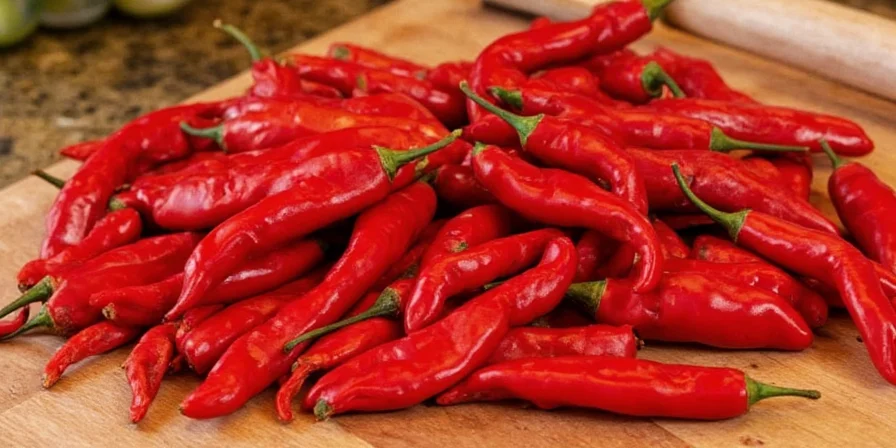
Table of Contents
- Why Dry Chilies? Flavor and Shelf Life Benefits
- 5 Best Ways to Dry Chilies (Step-by-Step)
- Pro Tips for Perfectly Dried Chilies Every Time
- How to Store Dried Chilies for Maximum Freshness
- Common Questions Answered
Why Dry Chilies? Flavor and Shelf Life Benefits
Drying chilies transforms them from perishable produce with just 2-3 weeks of freshness into shelf-stable flavor powerhouses lasting 12-24 months. The dehydration process concentrates capsaicinoids (the compounds responsible for heat), making dried chilies 2-4 times hotter than fresh ones by weight. Beyond increased heat, drying develops complex smoky notes through Maillard browning reactions that fresh peppers can't achieve. This concentrated flavor works better in spice blends, long-simmered sauces, and infused oils where fresh peppers would add unwanted moisture.
| Fresh Chilies | Dried Chilies |
|---|---|
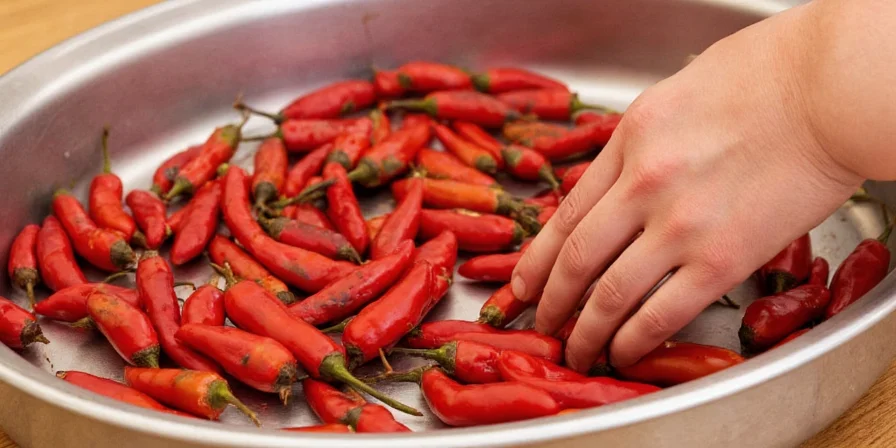 |
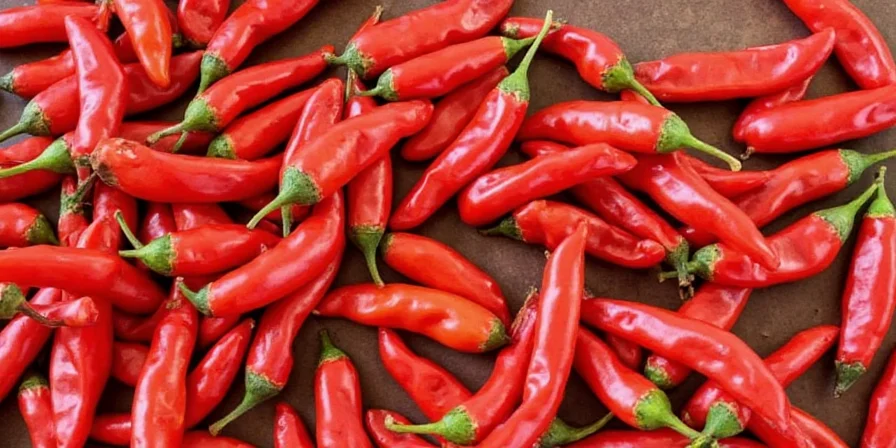 |
| Short shelf life, bulkier storage | 12+ month shelf life, space-efficient |
5 Best Ways to Dry Chilies (Step-by-Step)
-
Oven-Drying — Fast & Reliable Method for Home Cooks
Best for: Small batches, humid climates, beginners Time: 8-12 hours Temperature: 140-170°F (60-77°C) 1. Wash and pat chilies completely dry 2. Place on non-stick racks with space between peppers 3. Set oven to lowest setting with rear fan on for airflow 4. Prop door open 1-2 inches with wooden spoon to vent steam 5. Rotate trays hourly for even drying 6. Check at 8 hours—stems should snap cleanly when done

-
Air-Drying — Traditional Ristra Method
Best for: Dry climates, large harvests, decorative display Time: 2-3 weeks Conditions: 60-70°F (15-21°C), 50-60% humidity 1. Thread cotton string through chili stems 2. Create ristra (braided string) with space between peppers 3. Hang in dark, ventilated area away from direct airflow 4. Check weekly for mold by scent—should develop nutty aroma 5. Complete when chilies feel brittle throughout
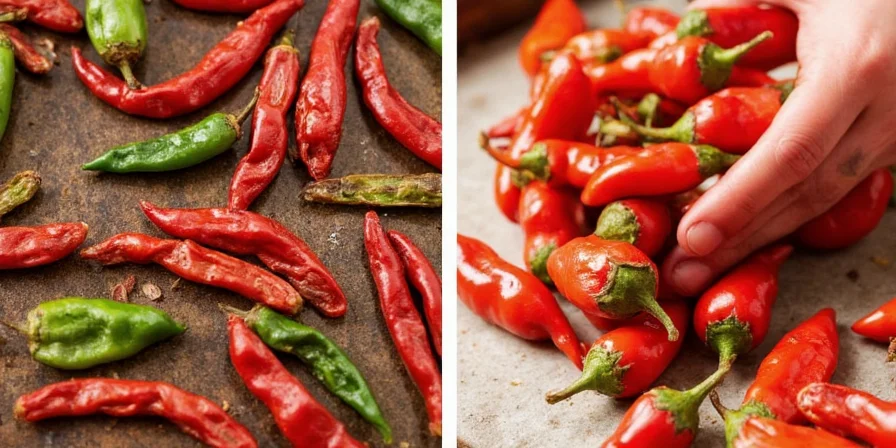
-
Food Dehydrator — Most Consistent Results
Best for: Serious home preservers, flavor preservation Time: 10-14 hours Settings: 135°F (57°C) with 15% humidity 1. Arrange chilies in single layer on trays 2. Set dehydrator to 135°F (57°C) 3. Run with consistent airflow 4. Check moisture at 10 hours using digital meter 5. Stop when moisture reaches 8-10% for safe storage
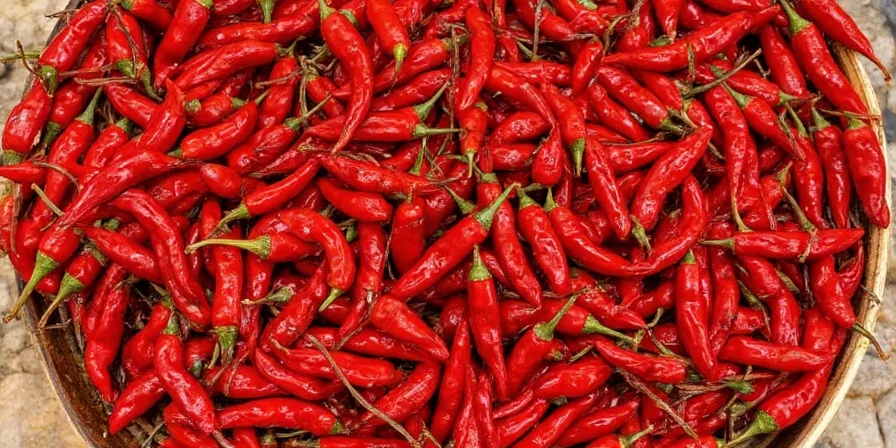
-
Sun-Drying — Natural Method for Dry Climates
Best for: Sunny, arid regions with low humidity Time: 4-6 days Conditions: Minimum 85°F (30°C), 30-50% humidity 1. Place chilies on UV-resistant mesh trays 2. Cover with food-safe netting to block insects 3. Position in direct sunlight for 6+ hours daily 4. Bring indoors overnight to prevent moisture absorption 5. Complete when chilies snap cleanly and feel papery

-
Freeze-Drying — Premium Flavor Preservation
Best for: Rare heirloom varieties, commercial use Time: 24-36 hours Equipment: Freeze-dryer required 1. Pre-freeze chilies at -4°F (-20°C) for 24 hours 2. Transfer to freeze-dryer at 50°F (10°C) 3. Maintain vacuum pressure below 500 mTorr 4. Process until completely sublimated 5. Yields near-fresh color and flavor in lightweight form
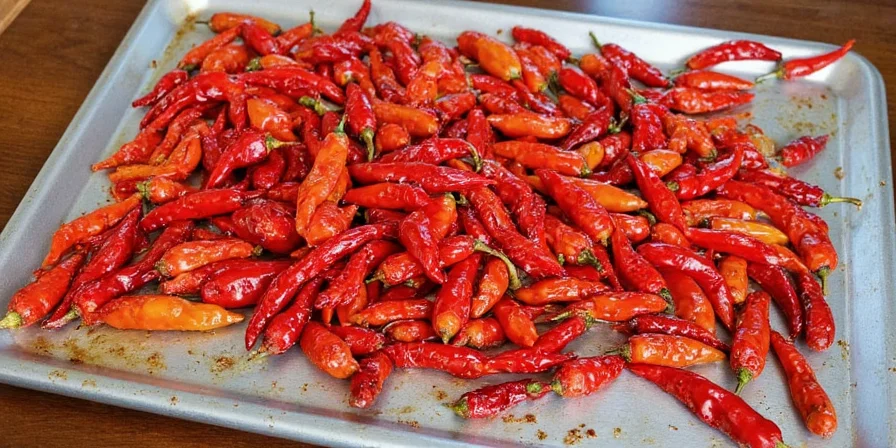
Pro Tips for Perfectly Dried Chilies Every Time
- Pre-treatment matters: Blanch thin-skinned varieties (like Thai chilies) in 160°F (71°C) water for 30 seconds to speed drying without flavor loss
- Avoid case hardening: For thick-walled chilies (poblanos, bell peppers), slice lengthwise and dry at lower temperatures (125°F/52°C)
- Moisture monitoring: Use digital hygrometer—exceeding 60% humidity risks mold during air-drying
- Safety first: Always wear nitrile gloves during handling—capsaicin transfers through cotton
- Post-drying stabilization: Store newly dried chilies in sealed containers for 48 hours before final storage
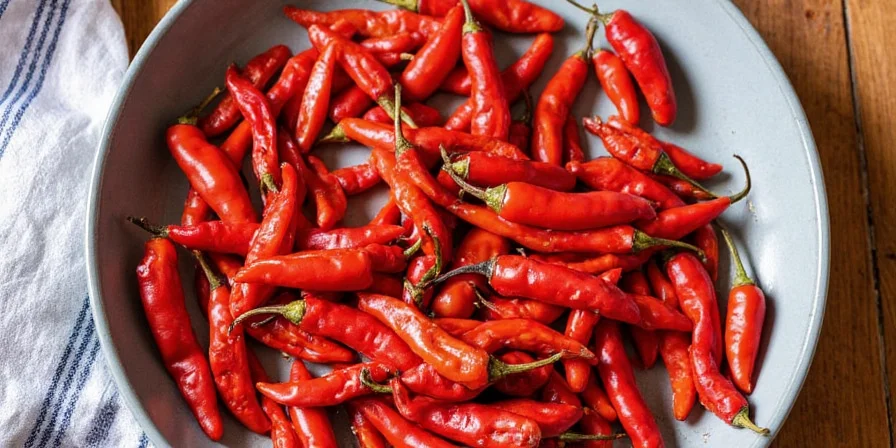
How to Store Dried Chilies for Maximum Freshness
Proper storage prevents flavor degradation from oxidation and moisture absorption. The ideal storage solution combines light protection, oxygen reduction, and moisture control. Test for readiness by snapping a chili stem—it should break cleanly without bending. For best results, follow these storage methods:
| Storage Method | Shelf Life | Flavor Preservation Rating |
|---|---|---|
| Vacuum Sealed + Oxygen Absorber | 24+ months | ★★★★★ |
| Mason Jar + Silica Gel (50% RH) | 12 months | ★★★☆☆ |
| Freezer (0°F/-18°C) | 36 months | ★★★★☆ |
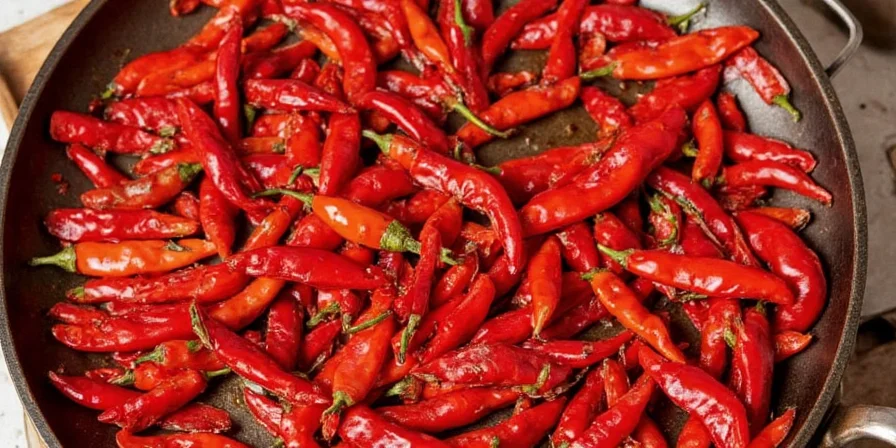
Common Questions Answered
- Does drying increase chili heat level? Yes—water removal concentrates capsaicinoids. Dried chilies measure 2-4x higher on Scoville scale than fresh counterparts. Heat intensifies proportionally to moisture loss.
- Why do my dried chilies develop white spots? This indicates moisture migration during storage, not mold. Ensure containers have oxygen absorbers and maintain below 60% relative humidity. White spots are crystallized capsaicin and safe to consume.
- Can thick-walled chilies like poblanos be effectively dried? Yes—but they require specialized techniques. Blanch for 60 seconds, slice lengthwise, and use dehydrator at 125°F (52°C) for 18+ hours. Thick walls need slower moisture evaporation to prevent case hardening.
- What's the ideal moisture content for safe storage? 8-10% moisture content prevents microbial growth. Use a digital moisture meter for accuracy—visual inspection alone is unreliable. Below 6% risks flavor degradation through oxidation.
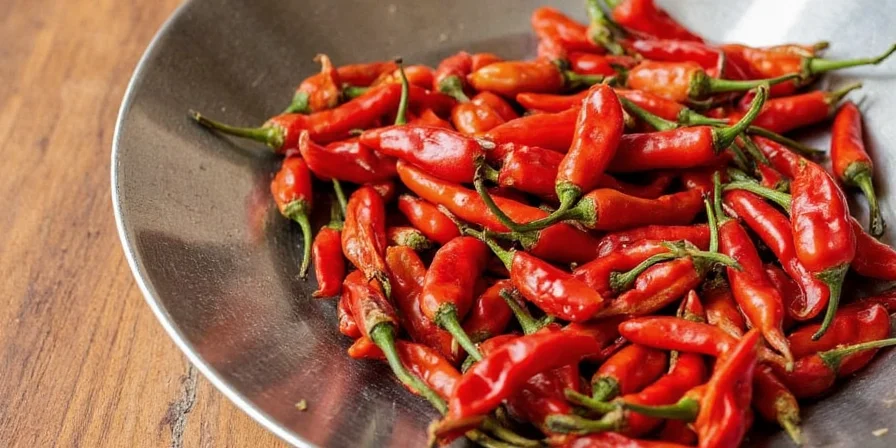
Conclusion
Whether you're preserving your garden harvest or preparing specialty ingredients, proper chili drying unlocks flavors impossible with fresh peppers. Start with oven-drying for quick, reliable results or try traditional ristra air-drying for decorative storage. Remember the critical moisture threshold of 10% for safe storage, and use vacuum sealing for maximum shelf life. The most successful dried chilies balance complete dehydration with preserved volatile compounds—achieved through proper temperature control and storage. Now that you know how to dry chilies properly, you can enjoy their concentrated heat and complex flavors year-round in your favorite dishes.
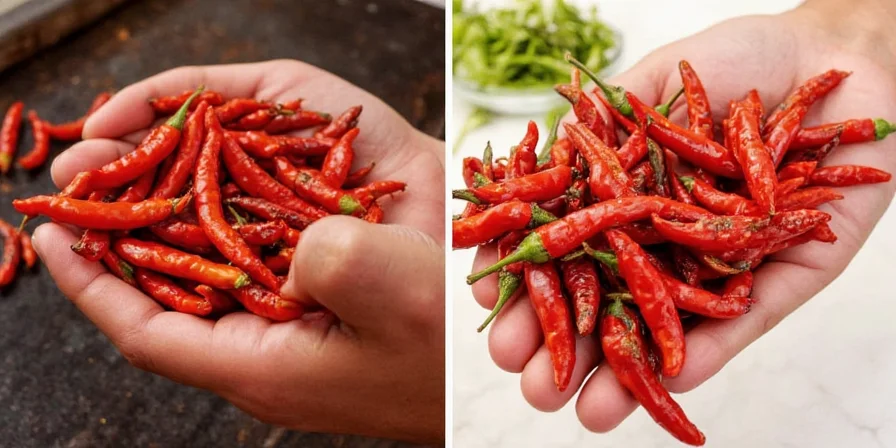

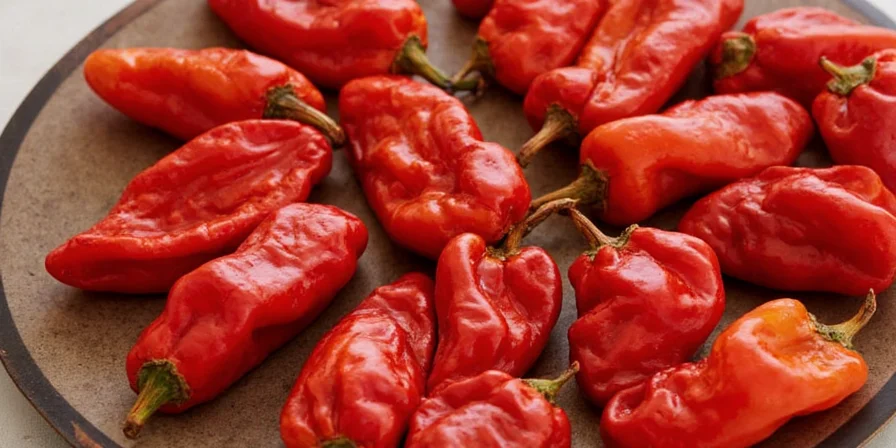









 浙公网安备
33010002000092号
浙公网安备
33010002000092号 浙B2-20120091-4
浙B2-20120091-4